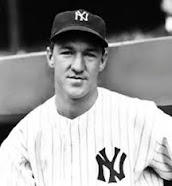Hey baseball fans!
Even in a shortened 2020 season, we are sure to see some crazy home run numbers across Major League Baseball, a trend that will only continue to pick up as we advance deeper into the 21st century. But with an emphasis on power comes the slow demise of one of baseball's most underrated and exciting statistics: the stolen base.
Most baseball fans like to think that base-stealing was always as common as it was right before the new millennium, but that's actually incorrect. Maury Wills and Lou Brock were the first consistently excellent base-stealers, regularly crushing the rest of the league in the category throughout the 1960s. But it was "Larcenous Lou" who oversaw the true rise of the stolen base in the 1970s. In 1975, Jerry Remy of the Angels and Jose Cardenal of the Cubs tied for tenth place in baseball in steals with 34 each. In 1976, Freddie Patek of the Royals came in tenth in steals with 51 of them. From 1976-1998, there were only two seasons (besides strike-shortened ones) in which the tenth-best stealer had less than 40 steals, a phenomenon that hasn't happened in baseball since 2006 (Alfonso Soriano, 41, Nationals). What's also important to note is that from 1976-1998, four hitters made it to the 500 Home Run Club (Hall of Famers Willie McCovey, Reggie Jackson, Mike Schmidt, and Eddie Murray) but from 1999-2015, twelve hitters accomplished the feat.
With this information, I wouldn't go as far to say that homers and stealing bases are antitheses of each other, but it is certainly fair to say that the long ball and small-ball aren't not opposites. That's why it makes sense that hitters are stealing less bases and hitting more home runs in modern baseball, but is this good? Does it make sense? Analytically, at least, yes. Hitting a home run is the quickest way to score a run in a baseball game, and sure, a team is more likely to score if there is a runner on second versus one on first, but having more players involved in a run-scoring opportunity makes a team less efficient statistically. But why is base-stealing still important? To answer that question, I'm going to drop some business vocabulary, so hold on to your briefcases.
A competitive advantage is a proportionate advantage of one entity over another. In the business world, a company that can manufacture a product in a cheaper way than other companies has a competitive advantage in that market. That company isn't unstoppable in that market necessarily, they're just better-equipped. The same thing goes for teams with more base-stealers. As baseball moves more and more into the power department, pitchers and catchers will be trained to be less and less worried about steals. It might be purely psychological, but it'll happen. This would let base-stealers feel more comfortable on the base paths and will collect stolen bases exponentially. Based on WAR, stolen bases might still be inferior to home runs in this future speedy utopia I'm describing, but always remember Syndrome's quote from The Incredibles: "If everyone's super, no one's super." In other words, if every team is trying to win in the same way, the team that will prevail is the team that's winning differently, the team that emphasizes batting average and OBP to reach base, the team that drives pitch counts through the roof, the team with a competitive advantage.
Thanks for reading this post and I hope you enjoyed it. Check back soon for more of "all the buzz on what wuzz."



